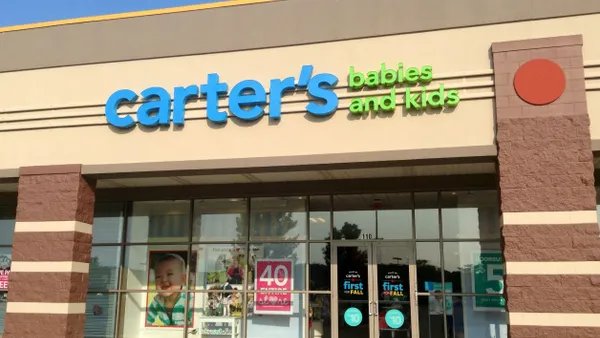Dive Brief:
-
Adidas latest flagship store, unveiled in Chicago’s Wicker Park neighborhood earlier this month, features murals and sculptures from local artists, according to a company press release.
-
The store, which is located under a portion of the city’s iconic elevated train tracks, features an "EL" train-inspired dressing room and a community wall giving customers a way to share information about upcoming events, the company said.
-
Adidas has grabbed back the number two spot from Under Armour, basing much of its comeback on a focus on urban aesthetics and streetwear. The company's second quarter currency-neutral revenues rose 19% as its gross margin improved 0.7 points to 50.1% and net income from continuing operations in the quarter grew 16% to € 347 million (about $409 million). All distribution channels recorded double-digit growth during Q2, with particularly strong support from e-commerce, where revenues grew 66%.
Dive Insight:
The company’s experiential retail stores, where customers have the option to customize shoes, are garnering kudos from analysts. Adidas’s online experience, which allows consumers to check in-store inventory and pick-up online orders from stores, is also excellent, Jane Hali & Assciates said in a recent email to Retail Dive. One weak point, according to Jane Hali analysts, is that, while " Adidas’s online experience is excellent and allows consumers to check availability in-store and collect from stores ..., their Instagram is not shoppable and they do not have a mobile app for shopping."
Adidas’ sales growth of nearly 20% led Cowen & Co. analyst John Kernan to note this summer that the German athletic retailer is "outgrowing Nike meaningfully in all major geographical regions and placing greater pressure on [Under Armour]," adding that the company’s 66% e-commerce growth “continues to highlight the massive opportunity in [direct-to-consumer sales]." Nike has already taken that note, evident in its decision to sell directly to customers via Amazon in addition to its own stores and website as it sees declining interest from teens.
Despite its success in the running and training categories, adidas has staked much of its growth on street styles and that is partly why Jane Hali & Associates analysts remain keen on the brand. "They continuously release new colorways for some of their key products like the NMD," according to a Jane Hali note emailed to Retail Dive. "Adidas Originals is always successful as the product resonates with a fashion upscale customer. The product continues to be design led with minimalistic silhouettes."
Adidas' celebrity influencer roster is impressive and growing, too, Jane Hali said. "Their list varies from celebrities to artists and micro influencers, which is an ideal way to grow their audience as they can tap into various demographics," JHA analysts noted. "They also collaborate with other brands or designers like Raf Simons, Stella McCartney, Palace Skateboards and White Mountaineering."
That’s all bad news for both number one Nike and Under Armour, which was knocked back off the number two spot last year by adidas. Nike is forging a strategy focusing "on speed and deeper connections with consumers," part of its "Consumer Direct Offense," which aims to boost innovation and product development and forge deeper connections to consumers in the world’s major cities, and, like adidas, includes a focus on urban styles. Under Armour executives told analysts the company plans to shed about 2% of its workforce as part of a restructuring plan that followed a second quarter loss to shareholders.













